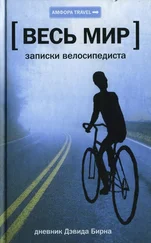The Stolen Building
I make my way back toward the center of town, and on my way I pass by a beautiful old administration building. It is covered with different-colored ceramic tiles, and these tiles seem different from many of the others used in town. I am told later that this edifice houses the Department of Water, which is in charge of the city’s water supply. The need for this department was made painfully obvious during the city’s great yellow fever epidemic in 1871 when between 150 and 170 people died every day. The outbreak killed half the population of Buenos Aires, and during the height of the epidemic so many people were dying every day that the railway company laid in a temporary branch line to serve a new cemetery—special trains for the dead leading to the magnificent town for the dead.
Why, though, does this building look so different from all the other period buildings? It turns out that the tiles and ornamentation all arrived by boat from Europe and were originally intended for a building in Venezuela, but someone made a mistake, and the boat ended up in Argentina instead. The mistake was thought to be fortuitous, and rather than sending them on their way, they were used for the construction of the Water Department building.
No Encuentros
I bike through the Parque Ecológico, a park that has paths through the wetlands that border one whole side of the city. As if the New Jersey Meadowlands were attached to Manhattan and had paths winding through the acres of reeds and marshlands. It seems the park is also a spot for secluded meetings, as there are signs advising that it is not a place for “ encuentros ” (meetings) . . . meaning sexual liaisons. The reeds hide much of the city, though it is right next door. It’s a strange sort of park. You can’t leave the paths even if you want to, for to venture off the trails would be to wade into the marshy wetlands.
Mondo Cane
I stop by the waterfront to watch a group of maybe six dogs that have gathered there. A black doggie, an outsider possibly attempting to join the group, or wanting at least to be taken seriously, stands slightly apart from the rest of the dogs and barks, fairly aggressively, while a large Labrador repeatedly mounts a sad-looking female with a houndlike face. He eventually succeeds in the task, after which the two are locked together for a few minutes.
None of the other dogs seem to pay much attention to this sex act taking place in their midst. Barking Blackie is shooed off by the others repeatedly, but he returns, again and again. A twin of the Lab fucker barks, demanding to chase sticks thrown in the water by some nearby people—he somehow seems to miraculously ignore all the fucking and barking and growling around him. This dog can focus! The lovers have unlocked now, and the others pass by one after another and smell the sad gal’s pussy, but they make no attempt to mount her. The two lovers now lick their privates . . . possibly to ease the pain of being stuck together.
Finally, fed up with the outsider Blackie’s aggressive nonstop growling and barking, a muscular member of the group takes the case in hand, grabs Blackie by his red collar, and, while both dogs are knee-deep in the water, attempts to semidrown him. Or at least that’s what it looks like he’s trying to do. Others join in—one chomping down on poor Blackie’s leg. A violent scrum ensues. Blackie, the outsider, could easily be drowned as the others thrash about and hold him down—but no—after a minute or two of violence they all let go of him and there is no blood, despite all the showing of teeth and even what seemed like real biting.
The pack seems satisfied that maybe now he will know his place. It seems they intentionally didn’t hurt him. It was all for show, to demonstrate that they weren’t going to put up with his noise, aggressiveness, and implied threats. The social hierarchy has been reasserted. Blackie stands up, still knee-deep in water, dripping, slightly stunned, not moving. He doesn’t run away. He slowly saunters up the bank to the “protection” of some bushes. A minute or so later here he comes again for more punishment; once again throwing down his never-ending challenge.
One dog pisses on another’s face. No reaction. What! The hierarchies here must be well worked out if the pissed-upon doesn’t even react.
On my way biking downtown from where I live in midtown Manhattan I sometimes pass by a little dog park at Twenty-third Street and Eleventh Avenue, next to the West Side bike path. It’s a triangle of man-made hillocks and humps. The dogs brought there by their owners usually each pick a hump to occupy, and there they stand—one dog on top of each mound, each a king of his own hill. Everybody’s happy. Clever design for a dog park.
I imagine that if there were only one mound in that park there might be more fights—a constant and nasty struggle might ensue to see who would be top dog—but as there are quite a few options available every dog can be king, at least for a little while.
Watching dogs, it sure seems we haven’t “advanced” much from the territorial and hierarchical struggles that they act out so transparently in front of our eyes. The thing about dogs is that their posturing is often just that—Blackie wasn’t really hurt, no blood was shed. Actual violence is truly a last resort. We humans constantly push to see where the boundaries lie as well, but sometimes when acted out on a national or global scale, or when the posturing involves a handy gun or some tanks and cluster bombs, it’s a little too easy to quickly fire off a few rounds and zap the target, knowing there will probably be no (immediate) repercussions. Rather than simply relegating an “inferior” to his or her appropriate position in the pecking order one has eliminated the person completely.
I cycle back to the hotel, where they instruct me not to bring my bike into the lobby. They suggest I ride down into the underground parking area—and from there I can use the elevator to take myself, with the bike, up to my room.
What’s Going On in Your Country?
The next day I do an interview at the local radio station. The studio is filled with people engaged in mysterious activities, all of which produce various kinds of noises. This, as I can eventually see, is entirely purposeful and intentional. A man next to me casually lifts up a piece of metal on a string and strikes it— CLAANNNGG! A woman noisily plays with an infant on the floor. Another man casually strums an out-of-tune guitar. Papers are rustled. It is as if they are “scoring” my conversation—creating an artificial sonic ambience and an imaginary “place” in which the interview is occurring. I wonder if they have a whole set of environments and ambiences that they can re-create—offices, beaches (on the weekend), factories, forests, ranches?
On the table are some tiny books. One is no bigger than an inch from top to bottom. They are published in Peru, and contain quotations and popular wisdom. They are bite-sized. I could eat one.
It’s the mid-aughts, and these days many journalists ask me, “What is going on in New York?” They mean: what is the political feeling since 9/11? I usually reply that New York, after a year or two, has more or less returned to its cosmopolitan, multicultural self, where no one thinks twice if the cab driver is wearing a turban. But the interior of the country, with access only to USA Today and Fox News for their information, well, they are still trembling with fear that Saddam or Osama bin Laden is going to come and steal their SUVs. The lack of information available to the populace that isn’t pure propaganda, and the continual efforts of the Bush administration to keep everyone in fear, has created a nation that wants nothing more than to close its doors and hide and to have other people—the imperial troops—make whatever imagined threat there is out there simply go away. They want someone else to do whatever it takes to protect them from this weird, inscrutable, and invisible enemy that they believe wants to take their comfortable lives from them.
Читать дальше









